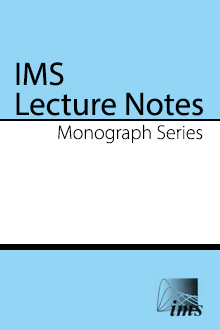Abstract
This book is a collection of papers dedicated to the memory of Yehuda Vardi. Yehuda was the chair of the Department of Statistics of Rutgers University when he passed away unexpectedly on January 13, 2005. On October 21--22, 2005, some 150 leading scholars from many different fields, including statistics, telecommunications, biomedical engineering, bioinformatics, biostatistics and epidemiology, gathered at Rutgers in a conference in his honor. This conference was on Complex Datasets and Inverse Problems: Tomography, Networks, and Beyond,'' and was organized by the editors. The present collection includes research work presented at the conference, as well as contributions from Yehuda's colleagues.
The theme of the conference was networks and other important and emerging areas of research involving incomplete data and statistical inverse problems. Networks are abundant around us: communication, computer, traffic, social and energy are just a few examples. As enormous amounts of network data are collected in this information age, the field has attracted a great amount of attention from researchers in statistics and computer engineering as well as telecommunication providers and various government agencies. However, few statistical tools have been developed for analyzing network data as they are typically governed by time-varying and mutually dependent communication protocols sitting on complicated graph-structured network topologies. Many prototypical applications in these and other important technologies can be viewed as statistical inverse problems with complex, massive, high-dimensional and possibly biased/incomplete data. This unifying theme of inverse problems is particularly appropriate for a conference and volume dedicated to the memory of Yehuda. Indeed he made influential contributions to these fields, especially in medical tomography, biased data, statistical inverse problems, and network tomography.
The conference was supported by the NSF Grant DMS 05-34181, and by the Faculty of Arts and Sciences and the Department of Statistics of Rutgers University. We would like to thank the participants of the conference, the contributors to the volume, and the anonymous reviewers. Thanks are also due to DIMACS for providing conference facilities, and to the members of the staff and the many graduate students from the Department of Statistics for their tireless efforts to ensure the success of the conference. Last but not least, we would like to thank Ms. Pat Wolf for her patience and meticulous attention to all details in handling the papers in this volume.


